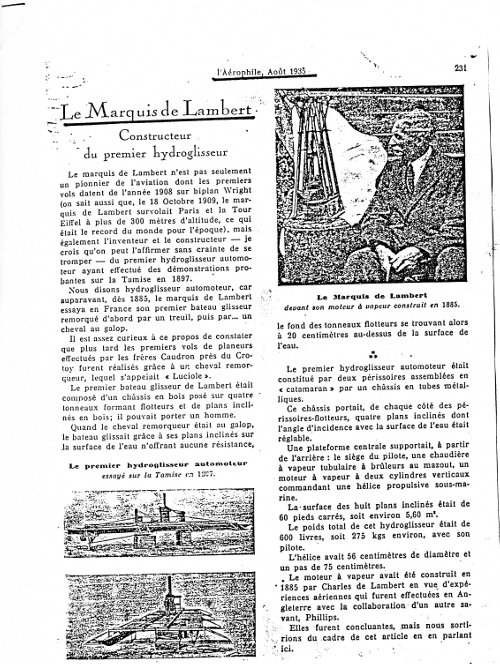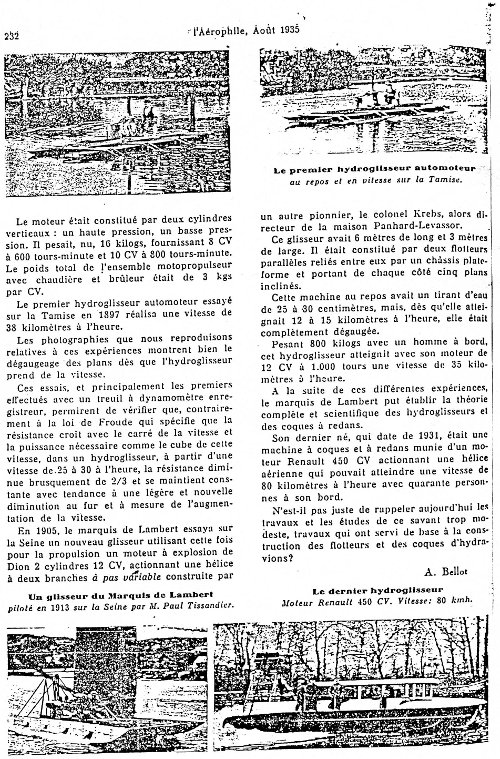CHARLES DE LAMBERT BRILLIANT INVENTOR, UNFORTUNATE INDUSTRIALIST
Charles de Lambert is a brilliant inventor as well and we owe the ‘hovercraft’ to his work.
From 1885, hardly 20 years old, he fully devotes himself to that which he calls in the beginning ‘planing boats’, thereupon ‘seaplanes’and finally, as described in dictionaries, ‘hydroplanes’ the definition of which reads: ‘vessel with airscrew and little draught to glide over shallow streams of water’.
The first hydroplane of Charles de Lambert is ‘composed of a wooden framework lying on four barrels which serve as floaters and of wooden inclined planes. A man can stand on it’. For sure a text deriving from the pen of the inventor.
He tries it out on the Seine by means of a winch and later in 1897 in England on the Thames where traction is provided by… a galloping horse on the riverbank. When the horse is at full gallop the boat, thanks to its inclined cambers, is gliding on the surface of the water which does not offer any resistance. Then the bottom of the floating barrels is 20 centimetres above the surface of the water. In England he cooperates with an English inventor Horatio Frederick Phillips (1845-1926) who has just manufactured a multi winged aeroplane. Later on we find Phillips again in Paris as chief in the plants of de Lambert.
As the first trials with a gliding boat have assured him he has the problem under control, he goes on with his job and in 1897-1898 he made experiments with a second machine.
The first self propelled hydroplane – as the article ‘Le Marquis de Lambert Constructeur du premier hydroglisseur’ learns us – has been composed of two paddleboats connected as a catamaran by means of a frame of metal tubes. This frame carries on both sides paddles, four inclined planes with variable angle of attack with the surface of the water. A central platform carries, viewed from the rear, the pilot chair, a tubular steam-boiler burning fuel oil as well as a steam engine with two vertical cylinders built by Charles de Lambert in 1885. At 600 revolutions the motor produces 8 HP and at 800 RPM 10 HP and drives an underwater propeller.
In 1895 – at an age of 30 years – during trials on the Seine near Saint-Cloud the hydroplane reaches a speed of 33 kilometers an hour.The surface of the eight inclined planes is about 5,60 m². Total weight of this hydroplane is about 300 kilos, pilot included. The propeller has a diameter of 45 centimetres and a propeller brace of 75 centimetres.


Fig. 5-1
‘l’Aérophile’ Revue technique et pratique des locomotions aériennes
August 1935

